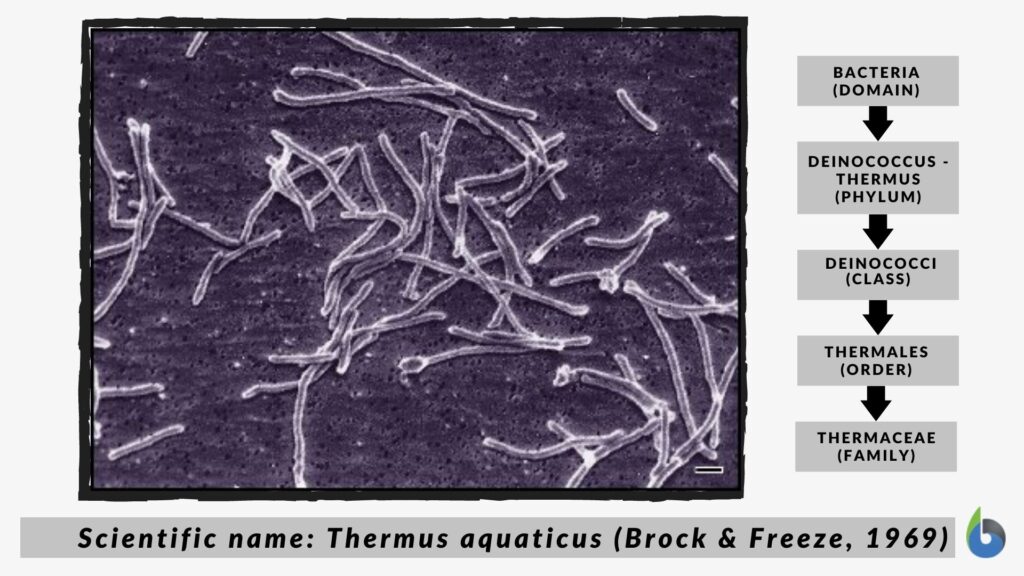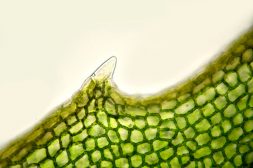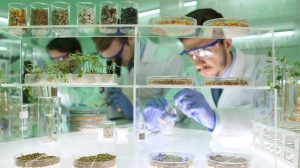
Thermophile
n., plural: thermophiles
[ˈθɜːməʊˌfaɪl]
Definition: A “high temperature-loving” organism
Table of Contents
Thermophiles Definition
What are thermophiles? Let us first understand the literal meaning of the word ‘thermophile’. Thermal is a term pertaining to heat whereas “philes” refers to having an affinity towards a specific thing. Thus, as the name suggests, thermophiles are organisms having affinity or liking towards high temperature, or in simple words, high temperature-loving organisms are known as thermophiles.
What is a thermophile in biology? Thermophiles are heat-loving organisms that exhibit optimal growth at a temperature above 60ºC or 140ºF. Thus, organisms that grow near deep-sea volcanic vents are likely to be thermophiles. Thermophiles inhabit a variety of extreme ecological sites like hot springs, hydrothermal vents found under the deep sea, tectonically active fault lines of the earth, volcanic sites, and decomposition sites (such as compost piles and organic landfills).
The organisms that have the capability to survive and flourish in highly challenging environmental conditions like temperature, pH, salt, and radiation are known as extremophiles. Clostridium paradoxum, Bacillus, Sulfurovum, Epsilonproteobacteria, etc., are some of the examples of extremophile bacteria. Extremophiles that survive under extremely high-temperature conditions, as found in hot springs or geothermal vents, are known as extreme thermophiles.
The term thermophiles are primarily used to refer to bacteria and archaea (thermophilic prokaryotes) that can thrive in habitats with high temperatures. Thus, if we are to consider the five-kingdom scheme of classification, the Kingdom that has thermophilic organisms is the Kingdom Monera, the kingdom consisting of the archaea and eubacteria. However, it should be clear at this point that not all monerans or prokaryotes are thermophiles but only those that are heat-resistant bacteria or heat-loving bacteria. Examples of bacterial thermophiles’ scientific names are Thermotoga maritima (phylum Thermotogae), Thermus aquaticus, and Thermus thermophilus (the latter two both belonging to the eubacteria phylum Deinococcus–Thermus). Thermophilic bacteria are presumed as among the earliest forms of eubacteria. Nevertheless, most known thermophiles are archaeabacteria. For example, Methanopyrus kandleri is a thermophile archaeon that thrives at 250ºF and is considered the “hottest” thermophile.

Since most of the thermophiles are bacteria and archaea, which are prokaryotes, does that mean that only prokaryotes are thermophiles? Is thermophile a eukaryote? Are there thermophilic eukaryotes? The answer to this is that thermophiles are primarily prokaryotes and the only representative eukaryotic thermophiles are the thermophilic fungi, e.g., Myceliophthora thermophila that can grow above 20ºC up to 60-62 ºC. Compared with thermophilic prokaryotes, there are no other eukaryotes that can similarly withstand such high temperatures. Unlike the thermophilic prokaryotes, other organisms would die within a given period of high-temperature exposure. All thermophiles are high-temperature loving organisms; however, few thermophiles may need other physical or chemical conditions like the presence of sulfur, acidic water, calcium carbonate or acidic conditions, etc., for their optimal survival and growth. So, thermophiles have the ability to survive and flourish in some of the harshest environmental conditions that exist on earth.

A thermophile is an organism that is adapted to live at relatively high temperatures, about 60 to 140 °C (113 to 252 °F). They are an example of extremophiles. Thermophiles are mostly prokaryotes from the domain Archaea. They are found in high-temperature places or geothermally-heated regions, such as hot springs, deep-sea hydrothermal vents, peat bogs, and compost. They are able to thrive in such extreme temperatures because they contain enzymes that can function at high temperatures. An example of a thermophile is Bacillus stearothermophilus. Etymology: “thermos”-, meaning “warm”, “hot” and “phile”, meaning “love”. Variant: thermophil (less common). Related term: hyperthermophile
How Can Thermophiles Live in Hot Environments?
It is now clear that thermophilic organisms have the capability to survive at a very high-temperature condition, at which other microorganisms will die. Do you know at what temperature bacteria die? The majority of the bacteria, except thermophilic bacteria, do not survive at a temperature above 65ºC or 149ºF.
The remarkable ability of these organisms to survive under such extreme thermal environmental conditions is due to a variety of factors which includes:
- Cell membrane permeability. The cell membrane of the thermophilic bacteria is made up of fatty acyl ester lipid. The fatty acyl ester lipid membranes are highly temperature-dependent and exhibit phase transition upon the change in the temperature condition. Hence, the cell membrane permeability and thereby microbial growth are controlled by the environmental temperature change. Archaebacteria, which are hyperthermophiles, lack fatty acids in their membrane; instead, thermophilic archaea contain isoprene units that are bonded together through ether linkages. These ether linkages and the branched structure of isoprene units enhance thermal stability but reduce membrane fluidity, which enables archaebacteria to survive even under extreme higher temperature conditions. Thus, the chemical stability of the lipidic membrane of thermophiles enables them to survive in harsh environmental temperature conditions.
- Thermally-stable enzymes and proteins. Thermophilic organisms possess special enzymes and proteins that are thermally stable. These thermally stable enzymes and proteins differ in their amino acid sequence in the critical regions, which allow these enzymes or proteins to fold in such a way that they remain protected even at high temperatures. This is why some bacteria are metabolically active in hot springs because they possess thermally stable enzymes and proteins that enable them to survive even at extremely high-temperature conditions.
- Temperature. Thermophiles have thermophilic lipids in their cellular membrane. Characteristically, the components or the composition of the thermophilic lipids changes according to the change in the temperature.
- G+C content. Higher G (guanine) and C (cytosine) content seem to provide more resistance to heat. This is because G and C can form more hydrogen bonds than A (adenine) and T (thymine) in DNA, for instance. A higher number of hydrogen bonds provides structural stability to the nucleic acid. Thus, a higher GC content could account for the ability of thermophiles to withstand high temperatures.
- Proteins. Thermophiles have a higher number of charged amino acids in the surface proteins than uncharged amino acids. Charged amino acids form intermolecular bridges that provide stability.
Types of Thermophiles
Thermophiles may be classified into groups such as obligate thermophiles, facultative thermophiles, and hyperthermophiles. Obligate thermophiles are those that need high temperatures in order to grow and thrive in their environment. Facultative thermophiles are those that can thrive at high temperatures as well as at relatively lower temperatures, e.g. below 50 °C. Hyperthermophiles are thermophiles that prefer temperatures above 80 °C for optimal growth. Because hyperthermophiles can withstand extremely high temperatures that would likely be detrimental to the survival of many organisms, they are a type of extremophiles.
Thermophiles are different from mesophiles. The latter grow best at moderate temperatures, i.e. 20 and 45 °C, which are not too hot and not too cold.
Why Are Thermophiles Important?
Thermophiles play a significant biotechnological as well as an ecological role.
- Thermophiles are a significant source of biotechnological tools. Furthermore, they are considered to be the holy grail of biotechnology as they are the source of extremozymes and molecular chaperons.
- Extremoenzymes are enzymes that have the ability to function in extreme environmental conditions of high temperature and acidic/alkaline pH. Extremozymes are widely utilized in the industry as well as biomedical research. One of the most common extremozymes is DNA polymerases. Thermococcus litoralis and Thermus aquaticus, which are hyperthermophilic bacteria, are widely used for their DNA polymerases. Other extremozymes are proteases, xylanases, amylases, glucoamylases, glucose isomerase pullulanases, aminotransferases, glutamate synthetase (GS). See Table 1.
- Molecular chaperones are proteins that are expressed under extreme stress conditions of temperature. Sulfolobus shibate and S. solfataricus are used as the source of molecular chaperons.
- Thermophilic enzymes from Bacillus stearothermophilus are used for the manufacturing of biological washing powder.
- Thermophiles are involved in the degradation of pollutants.
- The thermophiles carry out bioremediation of the oil-contaminated desert soil.
- Thermophiles help in the immobilization of heavy metals in the soil.
- Thermophiles are also used for the conversion of biomass to biofuels.
- Thermophiles are also helpful in the degradation of reactive textile dyes.
- Thermophiles have been found to potentially degrade keratin found in feathers, resulting in the formation of rare amino acids like proline, cysteine, serine, etc.
Table 1: Source of extremozymes |
||
|---|---|---|
| Extremozyme | Source thermophile organism | The optimum temperature of extremozyme |
| Proteases | Pyrococcus, Sulfolobus, Thermococcus, Desulfurococcus, Staphylothermus | ~100ºC |
| Amylases | Pyrococcus furiosus, Pyrococcus woessei | ~100ºC |
| Glucose isomerase | Streptomyces thermonitrificans | ~100ºC |
| Pullulanase II or amylopullulonase | Pyrococcus woessei, Pyrococcus furiosus, Thermococcus lithoralis, Thermococcus celer, Fervidobacterium pennavorans, Desulfurococcus mucosus | 105ºC |
| Glutamase synthetase | Bacillus subtilis | 100ºC |
| Aminotransferases | Thermococcus lithoralis | 100ºC |
Thermophile Habitats
Where do thermophiles live? Or where are thermophiles found? Thermophiles are fascinating organisms. Let’s learn more about them!
Thermophiles are ubiquitous as they can be found almost everywhere. Thermophiles can be found on land, sea, snow, volcanic sites, deserts, hot springs, compost piles, hydrocarbon reservoirs, oil reservoirs, deep marine sediment, ocean crust, continental deep subsurface, anaerobic digestion reactor, biogas plants. Thermophiles are most commonly found in hot springs and thermal vents; e.g., Yellowstone National Park, USA, is one of the largest habitats for thermophiles. The other significant habitat of the thermophiles includes Iceland, Mt. Lassen, New Zealand, Italy, and Kamchatka.
Classification
Based on the optimal temperature for growth and survival, microorganisms are classified as follows:
- Psychrophiles: Organisms that thrive at low temperatures (0-15 ºC or <20 ºC)
- Mesophiles: Organisms that thrive at moderate temperature (15-45 ºC)
- Thermophile: The organisms that grow in the temperature range of 45 and 122 ºC. There are three types of thermophiles:
(1) Moderately thermophile— that thrives at a temperature of 45°C
(2) Extreme thermophile— that thrives between 70°C and 80°C
(3) Hyperthermophile— that thrives between 80°C and 113ºC
As noted in the earlier section, thermophiles may also be classified as obligate or facultative. The difference between the two is that obligate thermophiles need high temperatures for survival and growth. In contrast, facultative thermophiles flourish at high temperatures but can even survive at a lower temperature.
Thermophile Versus Mesophile
Broadly, thermophiles are microorganisms that grow and proliferate at relatively higher environmental temperatures (45°C or 60°C and above). In contrast, mesophiles grow at a moderate ecological temperature (20-45 ºC). The difference between thermophile and mesophile is enlisted below.
Table 2: Difference between thermophile and mesophiles |
|
|---|---|
| Thermophiles | Mesophiles |
| Define Thermophiles: Thermophilic organisms grow and proliferate at a higher temperature | Define Mesophiles: These organisms grow and proliferate at a moderate temperature |
| Thermophile temperature range is 45 (or 60) -122ºC | Mesophiles thrive in the temperature range of 20-45 ºC |
| Genetically, thermophiles have higher G-C content in RNA as compared to the mesophiles | As compared to thermophiles, mesophiles have lower GC content in RNA |
| Possess thermophilic enzymes that remain functional at higher temperatures | Do not possess thermophilic enzymes |
| The optimal temperature is generally around 50ºC | The optimal bacteria temperature is generally around 37ºC |
| All thermophiles are non-pathogenic as they cannot survive at body temperature | Mesophiles can be pathogenic as well as non-pathogenic |
| Commercially used in the biotechnology industry for heat-stable DNA polymerase | Used widely in the dairy and wine industry |
| Examples of thermophiles: Thermococcus kodakarensis, Bacillus stearothermophilus, Thermus aquaticus | Examples of mesophiles: Staphylococcus aureus, Listeria monocytogenes |
Similarities between thermophile and mesophiles
- Both microorganisms are sensitive to temperature conditions and can not survive in sub-optimal temperature conditions
- Both microorganisms offer unique benefits and are indispensable for life on earth
Gene Transfer and Genetic Exchange
Horizontal gene transfer is a significant mode of evolution amongst microbes. Horizontal gene transfer refers to exchanging or transferring genetic material from one organism to another, other than the offspring. These organisms involved in sharing the genetic material may or may not be from the same species. Thermophilic microorganisms, namely archaea and bacteria, share a large number of genes due to horizontal gene transfer between them. Horizontal gene sharing helps thermophiles to adapt better to extreme environmental conditions. Transformation, transduction, and conjugation are the three basic steps involved in horizontal gene transfer. Recent research reports suggest the involvement of nanotubes and membrane vesicles (or exosomes) in the horizontal gene transfer.
Interestingly, horizontal gene transfer is more commonly seen amongst thermophiles as compared to the microbes that thrive in highly salty conditions. Horizontal gene transfer aids in the selective transfer of resistant genes that offers a modality of genome evolution in microbes, making them capable of surviving through resistant or extreme environmental conditions.
Try to answer the quiz below to check what you have learned so far about thermophiles.
References
- Gaughran E. R. (1947). The Thermophilic Microorganisms. Bacteriological reviews, 11(3), 189–225. https://doi.org/10.1128/br.11.3.189-225.1947
- Lusk B. G. (2019). Thermophiles; or, the Modern Prometheus: The Importance of Extreme Microorganisms for Understanding and Applying Extracellular Electron Transfer. Frontiers in microbiology, 10, 818. https://doi.org/10.3389/fmicb.2019.00818
- Mehta, R., Singhal, P., Singh, H., Damle, D., & Sharma, A. K. (2016). Insight into thermophiles and their wide-spectrum applications. 3 Biotech, 6(1), 81. https://doi.org/10.1007/s13205-016-0368-z
- Wackett L. P. (2011). Thermophiles and thermophilic enzymes: An annotated selection of World Wide Web sites relevant to the topics in Microbial Biotechnology. Microbial biotechnology, 4(6), 799–800. https://doi.org/10.1111/j.1751-7915.2011.00311.x
- Zeldes, B. M., Keller, M. W., Loder, A. J., Straub, C. T., Adams, M. W., & Kelly, R. M. (2015). Extremely thermophilic microorganisms as metabolic engineering platforms for production of fuels and industrial chemicals. Frontiers in microbiology, 6, 1209. https://doi.org/10.3389/fmicb.2015.01209
©BiologyOnline.com. Content provided and moderated by Biology Online Editors.








